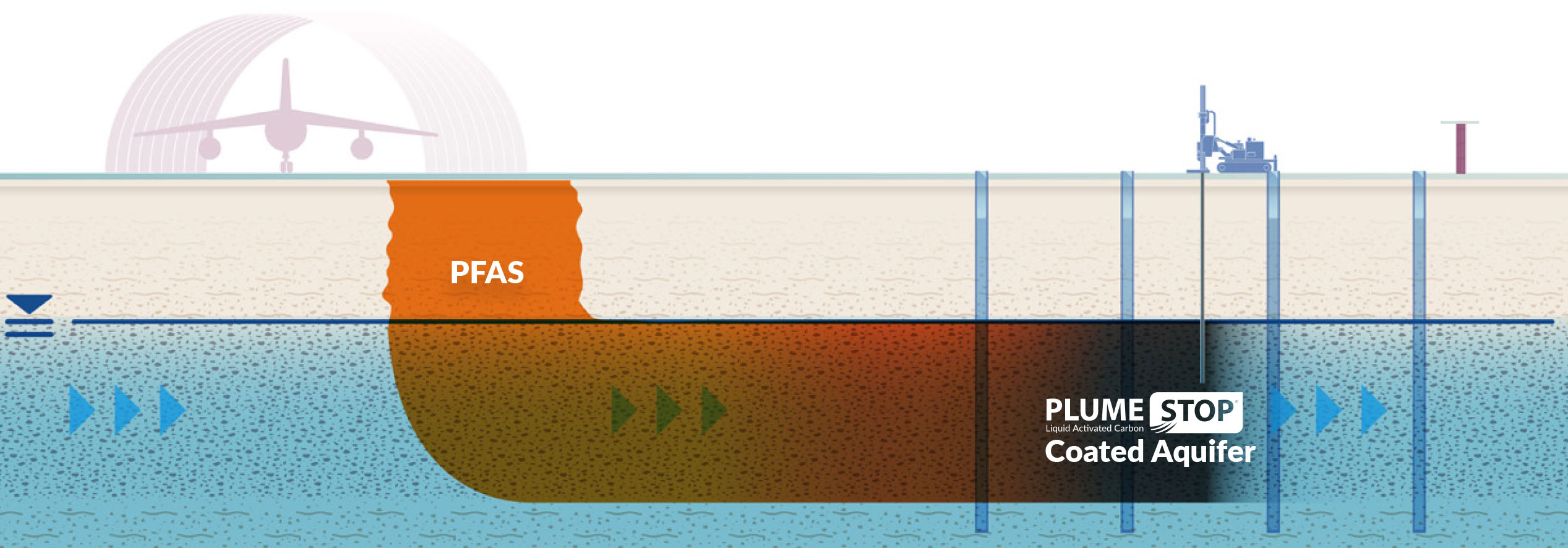Advanced Methods for Efficient PFAS Contamination Removal
The persistent challenge of PFAS contamination necessitates the exploration of innovative elimination methods that can effectively resolve these hazardous compounds. Cutting-edge technologies, such as innovative oxidation processes and numerous adsorption strategies, have actually emerged as encouraging solutions in mitigating PFAS from affected environments.
Comprehending PFAS Qualities
Although per- and polyfluoroalkyl compounds (PFAS) have been extensively made use of in various commercial and customer items because of their unique buildings, their perseverance in the setting positions considerable challenges to public wellness and safety. PFAS are a group of artificial chemicals identified by a carbon-fluorine bond, one of the toughest chemical bonds understood, which contributes to their remarkable security and resistance to degradation. This stability permits PFAS to gather in the environment and living microorganisms, leading to possible unfavorable wellness results.
These very same homes add to their ecological persistence, as PFAS do not conveniently break down via natural procedures. Comprehending the chemical properties of PFAS is essential for developing reliable methods to take care of and alleviate their environmental effect.
Cutting-edge Removal Technologies
The persistence of PFAS in the environment has actually stimulated the advancement of ingenious removal technologies focused on properly removing these contaminants from affected ecological communities. Amongst one of the most promising methods are advanced oxidation procedures (AOPs), which make use of powerful oxidants to damage down PFAS substances into less dangerous substances. AOPs can be tailored to target particular PFAS frameworks, enhancing their effectiveness.
An additional emerging innovation is using adsorption media, such as turned on carbon and ion exchange materials, which can precisely catch PFAS from infected water. These products have actually shown substantial elimination efficiencies, although regular substitute and regeneration are essential to preserve performance.
Membrane purification techniques, including reverse osmosis and nanofiltration, are additionally gaining grip in PFAS removal. These methods can effectively divide PFAS from water, offering a sensible remedy for dealing with polluted sources. Additionally, thermal therapy methods, such as incineration, can decay PFAS into safe results, though they call for careful administration to regulate discharges.
Jointly, these ingenious remediation technologies represent considerable innovations in the ongoing battle against PFAS contamination, providing different methods to bring back afflicted environments and secure public health.

Bioremediation Techniques
Bioremediation techniques offer an encouraging strategy to resolving PFAS contamination by harnessing the all-natural abilities of microorganisms to deteriorate these relentless substances (m270 waste management). This approach includes making use of microorganisms, fungi, and various other microbes that can metabolize or transform PFAS compounds into less harmful byproducts
Current innovations in molecular biology and environmental microbiology have actually enhanced our understanding of microbial communities and their potential duties in PFAS destruction. Researchers are actively discovering certain strains of microorganisms, such as Pseudomonas and Bacillus, which have actually demonstrated the ability to damage down particular PFAS compounds.
Sitting bioremediation techniques, where microorganisms are boosted directly in polluted settings, can be specifically efficient. This approach usually includes the application of nutrients or electron contributors to advertise microbial development and task. Furthermore, ex situ methods, such as bioreactors, enable for regulated problems that can enhance deterioration prices.
In spite of the guarantee of bioremediation, obstacles remain, consisting of the intricate nature of PFAS substances and the need for considerable area testing - m270 waste management. Continued research and advancement will be important to fine-tune these strategies and analyze their effectiveness in varied environmental contexts
Adsorption and Filtering Techniques
Attending to PFAS contamination usually involves employing adsorption and filtration methods, which are designed to remove these persistent chemicals from water and soil. Among the numerous techniques, activated carbon adsorption is extensively used because of its high area and porosity, enabling effective trapping of PFAS particles. Granular turned on carbon (GAC) systems are specifically preferred for dealing with large volumes of Full Report contaminated water, while powdered turned on carbon (SPECIAL-INTEREST GROUP) can be used for smaller-scale applications.
Ion exchange materials additionally reveal pledge in PFAS removal, functioning by exchanging PFAS ions with less unsafe ions in the water. This approach has actually shown performance in focusing PFAS substances, promoting their succeeding removal. view it In addition, membrane layer purification methods, such as reverse osmosis and nanofiltration, operate by utilizing semi-permeable membranes to different PFAS from water, efficiently reducing their concentrations.
While these methods work, they need to be very carefully selected based on the details PFAS substances existing and the environmental context. Continuous advancements in materials science and engineering are causing the advancement of novel adsorbents and filtration systems that boost elimination effectiveness and reduce functional prices, consequently enhancing general removal efforts.
Regulatory and Policy Factors To Consider
Just how can reliable regulative frameworks improve the administration of PFAS contamination? Comprehensive plans are vital to ensure a worked with and robust feedback to the difficulties posed by per- and polyfluoroalkyl materials (PFAS) Laws can develop clear guidelines for surveillance, reporting, and remediating PFAS-contaminated sites, promoting accountability among sectors and public entities. (m270 waste management)

In enhancement, monetary motivations and grants can be incorporated into plans to encourage the adoption of innovative removal modern technologies. Policymakers should also focus on r & d, ensuring that emerging approaches for PFAS elimination are verified and carried out effectively.
Moreover, public understanding and interaction are vital parts of any type of regulative approach, equipping neighborhoods to promote for their health and wellness. Ultimately, a well-structured governing setting will not only boost the administration of PFAS contamination but likewise promote lasting techniques that shield future generations.
Verdict
In summary, the intricacy of PFAS contamination demands the adoption of advanced removal approaches. Proceeded research study and development in this field remain critical to resolving the difficulties positioned by PFAS contamination.